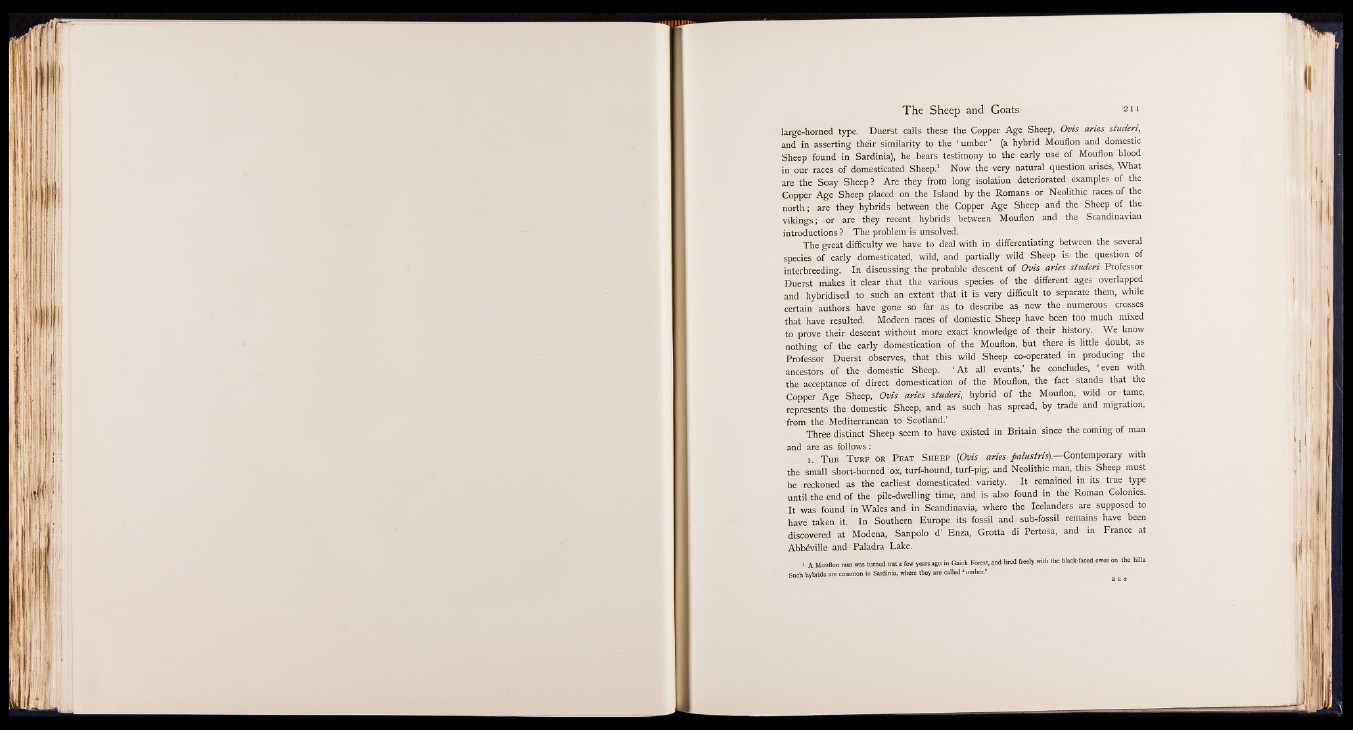
The Sheep and Goats 21 I
large-horned type. Duerst calls these the Copper Age Sheep, Ovis aries studeri,
and in asserting their similarity to the ‘ umber ’ (a hybrid Mouflon and domestic
Sheep found in Sardinia), he bears testimony to the early use of Mouflon blood
in our races of domesticated Sheep.1 Now the very natural question arises, What
are the Soay Sheep? Are they from long isolation deteriorated examples of the
Copper Age Sheep placed on the Island by the Romans or Neolithic races of the
north; are they hybrids between the Copper Age Sheep and the Sheep of the
vikings; or are they recent hybrids between Mouflon and the Scandinavian
introductions ? The problem is unsolved.
The great difficulty we have to deal with in differentiating between the several
species of early domesticated, wild, and partially wild Sheep is the question of
interbreeding. In discussing the probable descent of Ovis aries studeri Professor
Duerst makes it clear that the various species of the different ages overlapped
and hybridised to such an extent that it is very difficult to separate them, while
certain authors have gone so far as to describe as new the numerous crosses
that have resulted. Modern races of domestic Sheep have been too much mixed
to prove their descent without more exact knowledge of their history. We know
nothing of the early domestication of the Mouflon, but there is little doubt, as
Professor Duerst observes, that this wild Sheep co-operated in producing the
ancestors of the domestic Sheep. ‘ At all events,’ he concludes, ‘ even with
the acceptance of direct domestication of the Mouflon, the fact stands that the
Copper Age Sheep, Ovis aries studeri, hybrid of the Mouflon, wild or tame,
represents the domestic Sheep, and as such has spread, by trade and migration,
from the Mediterranean to Scotland.’
Three distinct Sheep seem to have existed in Britain since the coming of man
and are as follows:
i. T he T urf or P eat S heep (Ovis aries fialustris).— Contemporary with
the small short-horned ox, turf-hound, turf-pig, and Neolithic man, this Sheep must
be reckoned as the earliest domesticated variety. It remained in its true type
until the end of the pile-dwelling time, and is also found in the Roman Colonies.
It was found in Wales and in Scandinavia, where the Icelanders are supposed to
have taken it. In Southern Europe its fossil and sub-fossil remains have been
discovered at Modena, Sanpolo d’ Enza, Grotta di Pertosa, and in France at
Abbeville and Paladra Lake.
i A Mouflon ram was turned out a few years ago in Gaick Forest, and bred freely with the black-faced ewes on the hills.
Such hybrids are common in Sardinia, where they are called ‘ umber.’